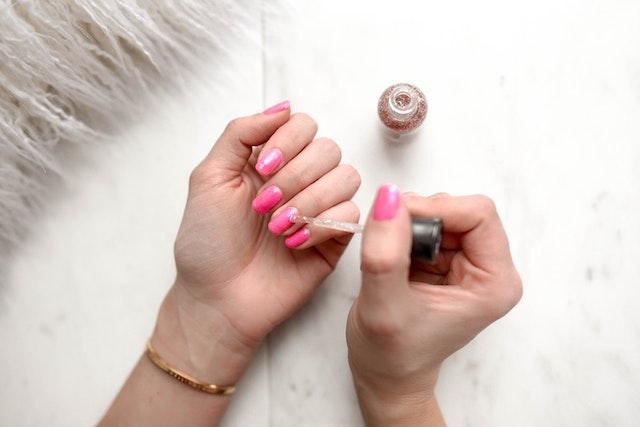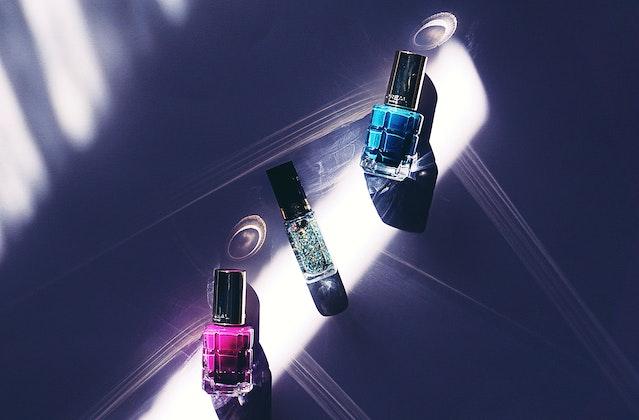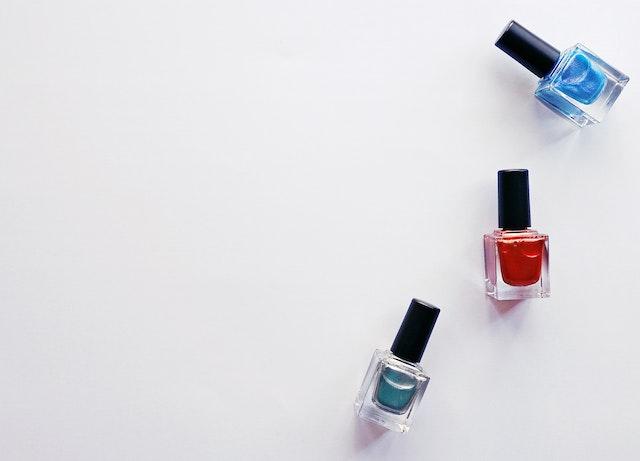
Nail polish is a cosmetic that has been around for centuries. The first recorded use of nail polish was in ancient China, where people would mix ground-up precious stones with egg whites and vinegar to create a paint that would color their nails.
This type of nail polish was only worn by the wealthiest individuals, as it was very expensive to create.
In modern times, nail polish is made from a variety of different chemicals and pigments.
Most polishes today are not composed solely of ground-up precious stones like in ancient China; instead, they contain synthetic dyes that are cheaper and easier to produce.
There are a wide variety of nail polish shades available, ranging from bold and bright to neutral and understated.
The early history of nail art
The history of nail polish can be traced back to ancient China, where it was used as a symbol of status and wealth. Over the centuries, the practice of painting one’s nails has spread to other cultures and undergone numerous changes.
Today, nail polish is available in a wide range of colors and styles and is worn by people of all ages.
The evolution of nail polish has been shaped by influences from art, fashion, and popular culture. Early formulations were made from a variety of natural ingredients, including beeswax, egg whites, and vegetable dyes.
These days, most nail polish is made from synthetic materials, such as nitrocellulose and acrylics.
However, natural ingredients are still sometimes used for added benefits, such as when vitamin E is added to help keep nails healthy.
As the popularity of nail polish continues to grow, it is likely that new innovations will continue to emerge.
- Read also: Who Invented Fake Eyelashes
- Read also: Who Invented Eyeglasses
How have different cultures used nail polish throughout history?
For many people, nail polish is simply a cosmetic accessory. However, this seemingly innocuous product has actually been used by cultures around the world for centuries.
In ancient China, for example, nail polish was seen as a sign of social status. Only members of the upper class were allowed to wear it, and the color of the polish indicated the wearer’s rank.
In India, meanwhile, women of all social classes have long used henna to dye their nails in a variety of colors.
In addition to being aesthetically pleasing, this practice was believed to ward off evil spirits.
Today, nail polish is no longer restricted to the upper class and is worn by women (and men) of all backgrounds.
Whether you prefer a simple, clear coat or a bright neon hue, there’s no denying that this beauty staple has come a long way since its humble beginnings.
What is the process of making nail polish?

The process of making nail polish is actually quite simple. The base of the polish is typically made from a mixture of nitrocellulose and plasticizers, which are dissolved in a solvent such as alcohol or acetone.
Colorants and pigments are then added to give the polish its desired color and opacity.
Finally, a glossy finish is achieved by adding a substance called a suspending agent. commonly used suspending agents include clay, mica, and silica.
Once the ingredients are mixed together, they are poured into bottles and left to curing, which allows the solvents to evaporate and the polish to harden.
The ingredients in nail polish can vary depending on the brand, but some of the most common include:
- Ethyl acetate
- Butyl acetate
- Nitrocellulose
- Propylene glycol
- Monomethyl ether acetate
- Triphenyl phosphate
- Isopropyl alcohol
- Ethyl alcohol
- Camphor,
- Stearalkonium hectorite
- Acrylates copolymer
- Dibutyl phthalate
- Stearalkonium bentonite
- Benzophenone-1
- Dimethicone
- Citric acid
While some of these ingredients may be unfamiliar, they all serve an important purpose in creating high-quality nail polish.
For example, ethyl acetate is responsible for the characteristic smell of nail polish remover; it also helps to dissolve the other ingredients so that they can be evenly mixed together.
Similarly, butyl acetate is used as a solvent and also helps to give nail polish its glossy finish.
Nitrocellulose is responsible for the consistency of the polish; it needs to be tough enough to withstand being applied to nails without chipping or flaking yet still soft enough to be easily removed with nail polish remover.
Propylene glycol monomethyl ether acetate helps to keep the nitrocellulose suspended in the solution so that it doesn’t settle at the bottom of the bottle; it also evaporates quickly so that nails are dry to the touch within minutes after application.
Triphenyl phosphate acts as a fire retardant and plasticizer; it also helps to increase shine and durability.
Isopropyl alcohol prevents lacquer fading and yellowing over time while also acting as a drying agent.
Ethyl alcohol gives lacquer its distinctive odor while also helping it to dry more quickly. Camphor prevents lacquer from drying out too quickly while also providing antimicrobial protection.
Stearalkonium hectorite keeps lacquer from separating into its different components while also preventing clumping and excessive thickening over time.
Acrylates copolymer provides Toughnessand flexibility while also increasing shine and durability Benzophenone-1 protects lacquer from ultraviolet radiation, which can cause fading Dibutylphthalate prevents chipping and adds flexibility.
Citric acid neutralizes any residual alkalinity in the lacquer formula so that it doesn’t irritate skin or nails upon application.
While some people may be concerned about chemicals in beauty products, it’s important to remember that all cosmetic products – not just nail polishes – contain synthetic ingredients.
In fact, many natural substances would not be able to meet the safety and performance standards set by cosmetic regulators without undergoing some form of processing or synthesis.
Moreover, even if a product is labeled “organic” or “natural,” this doesn’t necessarily mean that it’s free of synthetic ingredients; it simply means that those ingredients were derived from plant or animal sources rather than synthesized in a laboratory setting.
So if you’re looking for a truly natural option when it comes to cosmetics, you may want to consider homemade recipes made with food-grade ingredients – just make sure you do your research first!
What are the different types of nail polish?
Today, there are more options for nail polish than ever before. From traditional lacquer to gel polish, there is a formula to suit every taste.
Lacquer is the most classic type of nail polish and tends to be the most affordable.
It is also one of the easiest to apply, making it a good option for beginners.
Gel polish is another popular choice and offers a long-lasting finish. It is available in both traditional and LED-cured formulas.
LED-cured polishes cure faster than traditional gel polishes, making them a convenient option for busy women on the go.
Finally, there is shellac polish, which offers a chip-resistant finish that can last up to two weeks. Shellac polishes are available in both traditional and UV-cured formulas.
UV-cured shellac polishes cure faster than traditional shellac polishes, making them a convenient option for busy women on the go. With so many options available, it is easy to find the perfect nail polish to suit your needs.

Tips and tricks for removing nail polish
Anyone who has ever painted their nails knows that the process is not always seamless.
In fact, it can often be quite messy, with polish ending up on the skin, clothing, and furniture. And once the polish is dry, removing it can be an even bigger challenge.
If you’re looking for ways to remove nail polish quickly and easily, here are a few tips and tricks to help you out.
Perhaps the easiest way to remove nail polish is to use a cotton ball or pad soaked in nail polish remover. Simply hold the pad on the nail for a few seconds and then wipe away the polish.
If you’re struggling to get tough stains out of fabric, try using a toothbrush.
Dipped in nail polish remover to scrub at the stain. You can also try freezing the polish off by submerging your nails in ice water for a few minutes.
Whatever method you choose, with a little patience and elbow grease, you should be able to get your nails looking good as new in no time.
- Read also: Who Invented Shoes
- Read also: Who Invented the Umbrella
Final thought
Nail polish is a beauty essential that has been around for centuries. It can enhance your nails and give you a polished look that will make you stand out from the crowd.
With so many colors and styles available today, it’s easy to find the perfect nail polish for any outfit or occasion.
Thanks for following along on our journey through the history of nail polish! Be sure to check out our website for more tips on how to use nail polish to create beautiful looks that will make you feel confident and fabulous.



